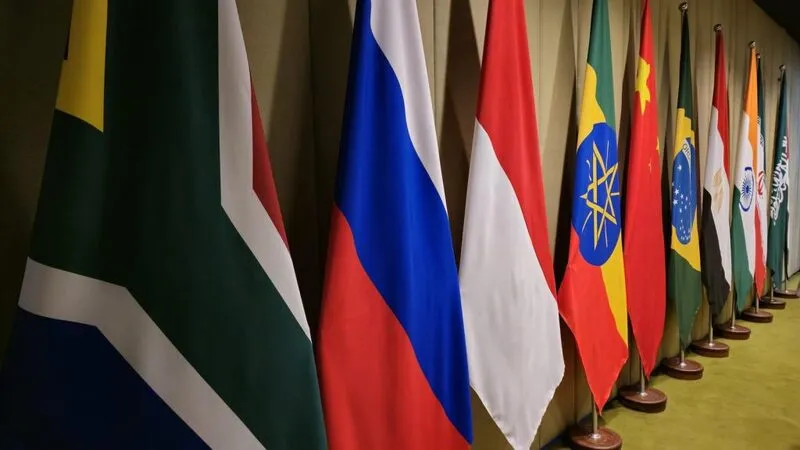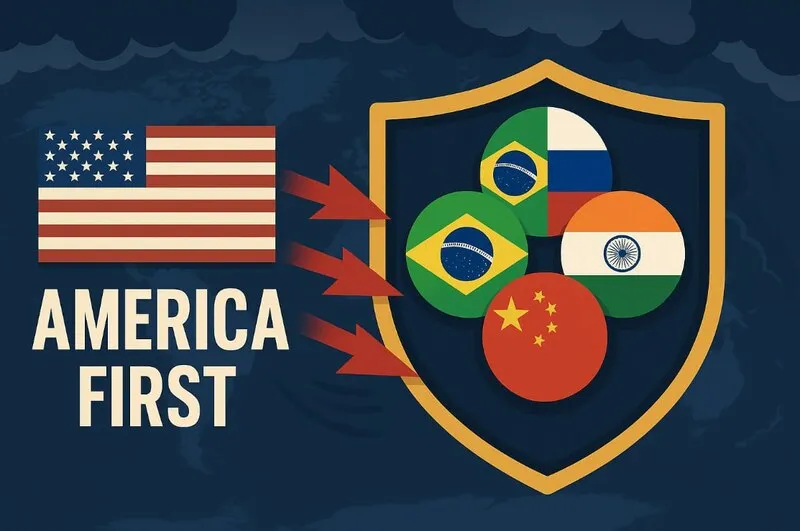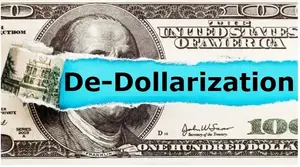BRICS nations are right now implementing a three-pronged BRICS survival strategy to counter America First policy pressures and also navigate escalating global trade uncertainty. The eleven member nation coalition faces direct threats from Washington, including potential 100% tariffs should member states challenge dollar dominance. Development finance challenges and geopolitical risks have intensified as economic sanctions impact reshapes the alliance’s priorities, particularly affecting Russia’s role within the bloc.
Also Read: Pakistan UN Security Council President Backs BRICS Multipolar World Agenda
How BRICS Survival Strategy Addresses America First, Trade Risks, And Finance

Reassurance Strategy to Counter Washington Tensions
BRICS has adopted reassurance tactics aimed at demonstrating the coalition is not anti-American. Individual member states such as India and Brazil are communicating this message to Washington. The new BRICS survival strategy abandons Russia’s previous efforts to create alternative currency mechanisms.
Sarang Shidore, director of the Quincy Institute’s Global South Program, had this to say:
“BRICS could impress on Washington that even as it turns more inward, burdens still need to be shared to solve global problems.”
The grouping aims to position itself as delivering stability that reduces mass migration, terrorism, and organized crime – outcomes directly benefiting US national interests. This approach recognizes that America First policy pressures require careful navigation to avoid undermining the alliance. At the time of writing, most member states have embraced this reassurance strategy.
Retrenchment From Broad Agenda to Focused Priorities
The BRICS survival strategy includes significant retrenchment from the coalition’s expansive agenda. Hard choices are being made by the grouping, which operates without formal secretariat. Geopolitics and security matters present challenges, as these areas magnify internal differences within an alliance originally designed for economic governance.
BRICS has focused on development finance challenges as the primary area, with leaders placing laser attention on strengthening the Shanghai-based New Development Bank (NDB). The institution has maintained operations for a decade while retaining high international credit ratings, though its annual lending of $4 billion remains modest compared to World Bank volumes. This retrenchment reflects recognition that global trade uncertainty requires focused efforts rather than scattered initiatives.
Trade Integration as Defensive Mechanism
BRICS states maintain unanimous support for defending global trading order despite broader tensions. The grouping’s approach reflects recognition that global trade uncertainty requires alternative structures when traditional partnerships become unreliable under volatile foreign policy conditions.
BRICS promotes member participation in the Multi-Party Interim Appeal Arbitration Arrangement to avert US-engineered disputes in World Trade Organization processes. The members are developing mechanisms that allow trade integration and trade facilitation to combat effects of America First policies.
Climate action and international health are other growth potentials since Washington has left these regions. The status of China and India as vaccine powers places BRICS in this position to transform the current research facilities into physical institutions. The strategy appreciates that there is a need to differ in geopolitical risks.
Also Read: China Increases Quota for Foreign Investments Ahead of BRICS Summit
The BRICS survival strategy is a strategic approach to respond to new challenges that have never been witnessed because of America First pressures. The three elements of the simultaneous effort of reassurance, retrenchment and reinforcement is the three-prong approach to take note of the restraint of opportunities as well as opportunities within the geopolitical boundaries of the current times. This will only be successful when it keeps its focus on development finance issues and does not embrace provocative currency options that may lead to a harsh economic sanction effect.






